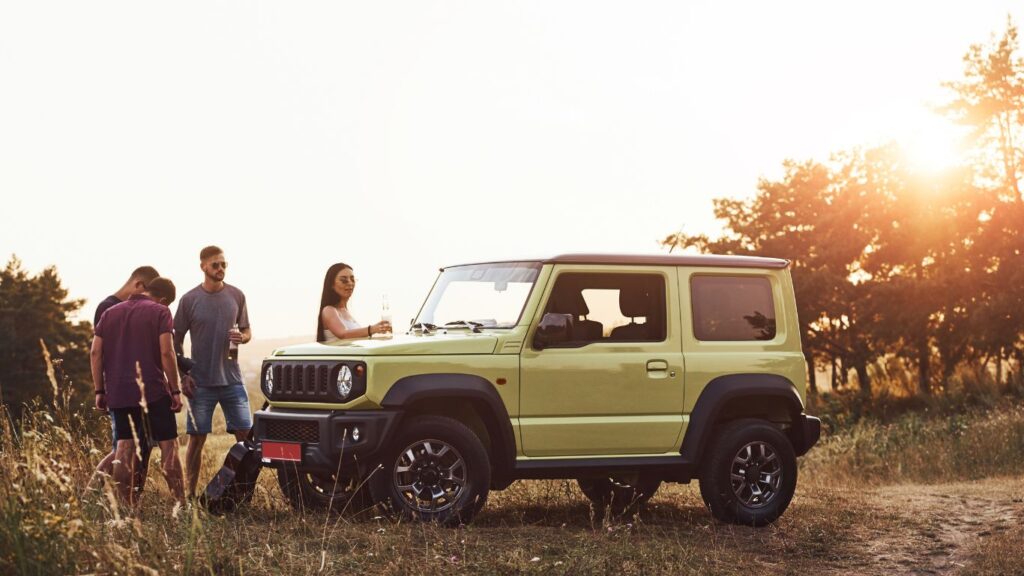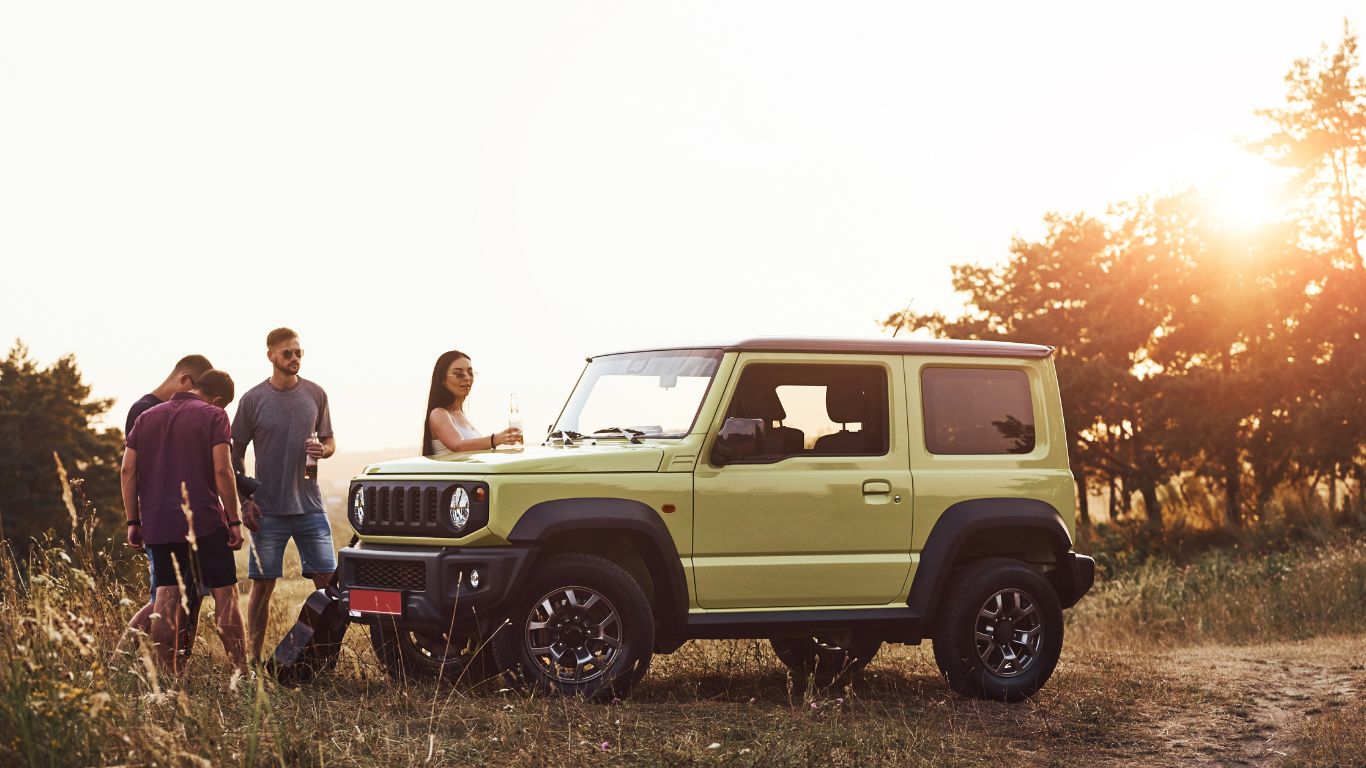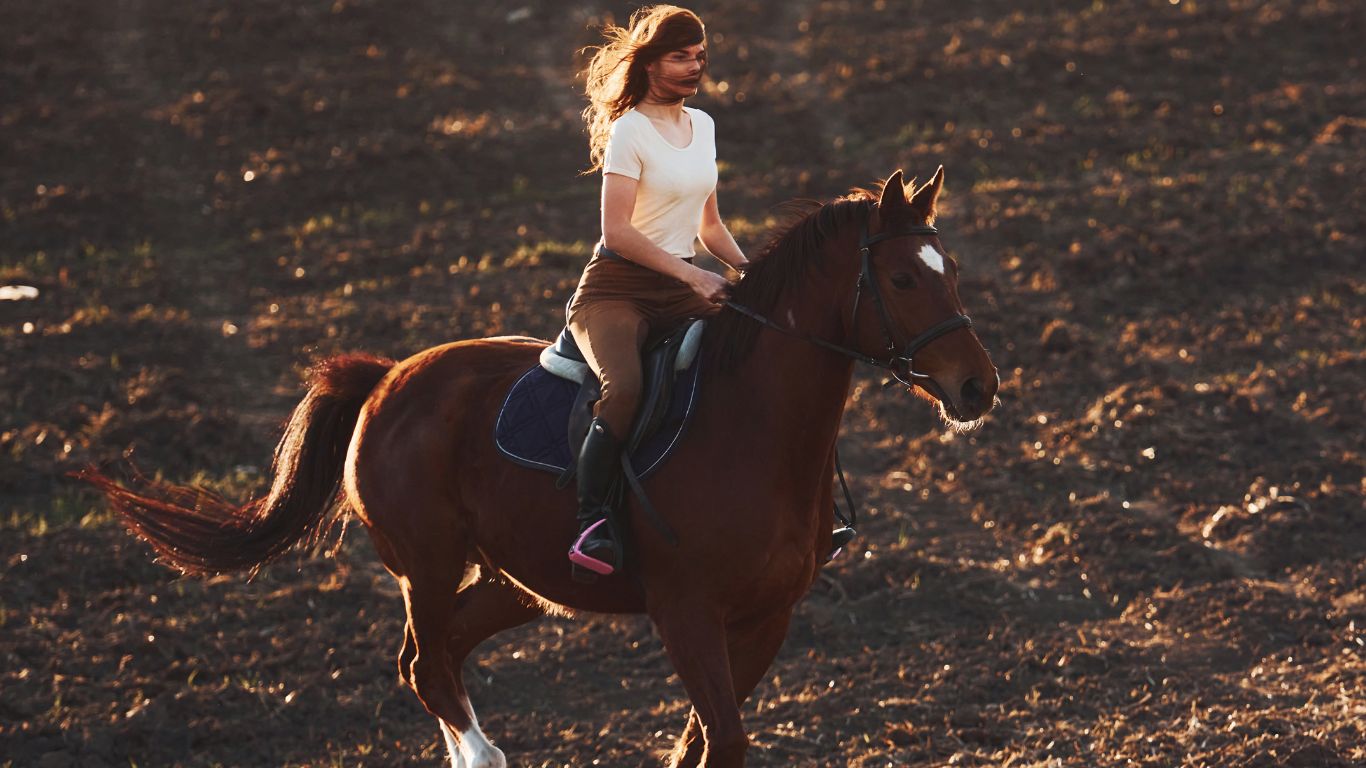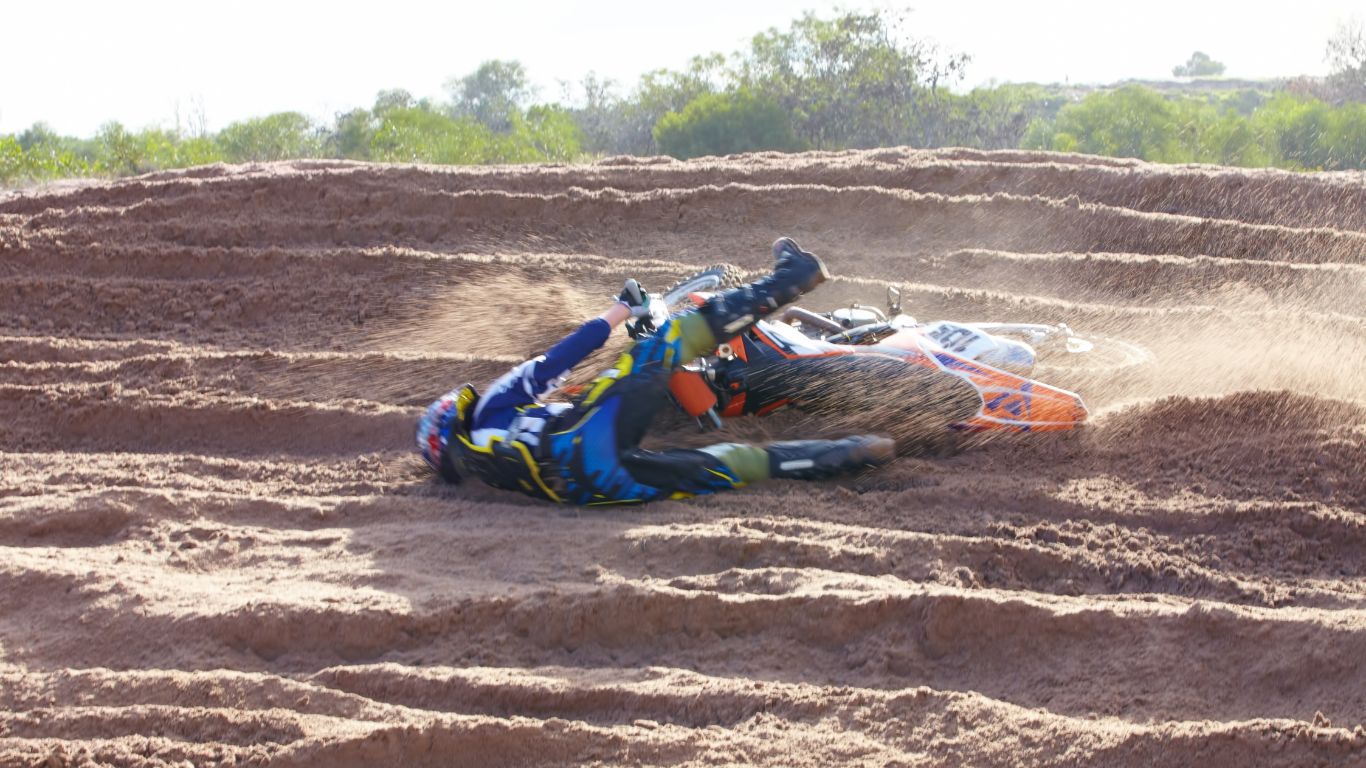Ford’s lineup of S.U.V.s has expanded in recent years to include both the Bronco and the Bronco Sport, which cater to different types of drivers and lifestyles. The original Bronco, first introduced in 1966, has been revamped to look more rugged and capable than ever before, making it a top choice for off-road enthusiasts and adventurous drivers. On the other hand, the Bronco Sport, a more compact version of the original Bronco, offers a sleeker design and more urban appeal, perfect for city dwellers looking for a versatile and stylish S.U.V.

Both the Bronco and the Bronco Sport boast impressive performance capabilities, but they differ in terms of size, features, and price. With the Bronco offering more power and off-road capabilities, it has become a popular choice for those seeking a proper outdoor adventure vehicle. In contrast, the Bronco Sport provides a more comfortable and practical driving experience, making it an excellent option for everyday commuting and errands. Whether you prioritize off-road performance or urban versatility, Ford’s Bronco lineup has an option for you.
Differences in size and shape
When comparing the Bronco and Bronco Sport, one of the most noticeable differences is in their size and shape. The Bronco is larger and more rugged in appearance, while the Bronco Sport is more compact and streamlined.
The Bronco is a full-size S.U.V. that is designed for off-road adventures and rugged terrain. It has a boxy shape with a high roofline and wide stance, giving it a powerful and commanding presence on the road. With a longer wheelbase and greater ground clearance, the Bronco is built to tackle rugged trails and obstacles with ease.
On the other hand, the Bronco Sport is a smaller, more versatile S.U.V. that is designed for urban environments and everyday use. It has a sleeker, more aerodynamic shape with a lower roofline and narrower stance, making it well-suited for city driving and tight parking spaces. The Bronco Sport is more compact than its larger sibling, making it easier to maneuver in crowded areas and city streets.
In terms of dimensions, the Bronco is longer, wider, and taller than the Bronco Sport. The Bronco measures 190.5 inches in length, 76.3 inches in width, and 73 inches in height, while the Bronco Sport measures 172.7 inches in length, 74.3 inches in width, and 71.4 inches in height. This difference in size gives the Bronco a more imposing and muscular appearance, while the Bronco Sport has a more nimble and agile stance.
Another critical difference in their size and shape is the wheelbase. The Bronco has a longer wheelbase of 116.1 inches compared to the Bronco Sport’s wheelbase of 105.1 inches. This longer wheelbase on the Bronco contributes to its stable and smooth ride on rough terrain, while the shorter wheelbase on the Bronco Sport gives it better handling and maneuverability in tight spaces.
Overall, the differences in size and shape between the Bronco and Bronco Sport reflect their intended purposes and target audiences. The Bronco is designed for adventurous individuals who seek ruggedness and capability in their vehicles. At the same time, the Bronco Sport is targeted towards urban dwellers who prioritize versatility and convenience in their daily commute.

The Bronco and Bronco Sport may share the same nameplate, but they are distinct in their size and shape. The Bronco is more extensive, more rugged, and built for off-road exploration, while the Bronco Sport is smaller, more streamlined, and geared towards urban living. Whether you prefer a commanding presence on the road or nimble agility in the city, Ford offers two options to suit your needs and lifestyle.
Off-road capabilities
When it comes to off-road capabilities, the Bronco and Bronco Sport certainly do not disappoint. Both vehicles are designed to excel in rugged terrain and provide a thrilling off-road driving experience.
Let’s start with the Bronco, the larger and more rugged of the two. With its potent engine options, advanced off-road technology, and robust suspension system, the Bronco is a force to be reckoned with off the beaten path. The available Sasquatch Package takes the Bronco’s capabilities to the next level, with features like 35-inch tires, front and rear locking differentials, and Bilstein shocks for superior off-road performance. Whether you’re tackling steep inclines, navigating rocky terrain, or fording streams, the Bronco is up to the challenge.
On the other hand, the Bronco Sport may not have the same brute strength as its bigger sibling, but it is still a capable off-roader in its own right. With available features like a Terrain Management System with G.O.A.T. modes (Goes Over Any Terrain), the Bronco Sport is equipped to handle a variety of off-road conditions, from dunes to muddy trails. The vehicle’s compact size and nimble handling make it well-suited for tight, twisting trails where larger vehicles might struggle to maneuver.
Both the Bronco and Bronco Sport feature impressive ground clearance, approach and departure angles, and water-fording capabilities, allowing them to confidently tackle challenging terrain without breaking a sweat. The Bronco Sport’s available Badlands trim level further enhances its off-road prowess with features like a front bash plate, all-terrain tires, and a twin-clutch rear-drive unit with a differential lock for improved traction in harsh conditions.
Ultimately, whether you choose the full-sized Bronco or the more compact Bronco Sport, you can rest assured that you’ll have a capable off-road companion ready to take on any adventure. Both vehicles are designed to provide a thrilling and exciting off-road driving experience, making them ideal choices for those who love to explore the great outdoors.
Performance comparison
When it comes to performance, the Bronco and Bronco Sport may share similar names, but they each offer unique driving experiences.
Let’s start with the Bronco. This powerhouse is built for off-roading adventures, with a rugged design and robust capabilities. The standard 2.3-liter EcoBoost engine delivers an impressive 270 horsepower and 310 lb-ft of torque, providing plenty of power to tackle any terrain. For those seeking even more muscle, there’s an available 2.7-liter EcoBoost V6 engine option, which ramps up the horsepower to 310 and torque to 400 lb-ft. Both engines are paired with a 10-speed automatic transmission, ensuring smooth and efficient shifts.
On the other hand, the Bronco Sport is designed for those who want a more versatile and agile driving experience. It comes equipped with a standard 1.5-liter EcoBoost engine that generates 181 horsepower and 190 lb-ft of torque. If you’re looking for an extra kick, there’s also an available 2.0-liter EcoBoost engine that bumps up the power to 245 horsepower and 275 lb-ft of torque. The Bronco Sport comes with an 8-speed automatic transmission, providing responsive and precise gear changes.
In terms of handling, both vehicles shine in their ways. The Bronco’s larger size and higher ground clearance make it a beast off-road, quickly conquering rough terrain with its advanced four-wheel-drive system and optional front and rear locking differentials. Its sophisticated suspension system ensures a smooth and stable ride, no matter the conditions. On the other hand, the Bronco Sport’s smaller size and lighter weight make it more agile and maneuverable, making it an excellent option for city driving and tight spaces.
When it comes to towing capacity, the Bronco has the edge with a maximum towing capacity of 3,500 pounds, thanks to its powerful engine options and robust build. The Bronco Sport, while still capable of towing up to 2,200 pounds, needs to catch up in this category.
Fuel efficiency is another crucial factor to consider. The Bronco Sport offers better fuel economy, with an estimated 25 mpg in the city and 28 mpg on the highway with its standard engine. The Bronco, with its larger engines and heavier build, comes in at around 20 mpg in the city and 26 mpg on the highway.
Both the Bronco and Bronco Sport have their strengths when it comes to performance. The Bronco is a powerhouse off-roader, built for tackling the most challenging trails with ease. Meanwhile, the Bronco Sport offers a more versatile driving experience, with better fuel efficiency and agility for city driving. Ultimately, the choice between the two will depend on your driving needs and preferences. Whether you’re a hardcore off-road enthusiast or a city dweller looking for a capable S.U.V., there’s a Bronco model that’s perfect for you.
Interior features and technology
When it comes to the interior features and technology of the Ford Bronco and Bronco Sport, both vehicles offer a range of options to make your driving experience as comfortable and convenient as possible.
Starting with the Ford Bronco, this rugged S.U.V. comes equipped with a spacious and versatile interior that can accommodate up to five passengers. The seats are comfortable and supportive, making long drives a breeze. The Bronco also offers plenty of cargo space, with the rear seats folding down to provide even more room for all your gear.
In terms of technology, the Ford Bronco boasts a range of features to keep you connected and entertained on the road. The SYNC 4 infotainment system comes standard, offering a user-friendly interface with responsive touch controls. You can easily access your favorite apps, music, and navigation with the large touchscreen display.
The Bronco also offers a variety of driver-assist features to help keep you safe on the road. These include blind-spot monitoring, lane-keeping assist, and adaptive cruise control. With these advanced technologies, you can feel confident and secure behind the wheel no matter where your adventures take you.
On the other hand, the Ford Bronco Sport offers a slightly different interior experience. This smaller and more compact S.U.V. is designed for those who prioritize versatility and convenience. The Bronco Sport can comfortably seat five passengers, and the rear seats can be adjusted to accommodate different combinations of passengers and cargo.
In terms of technology, the Bronco Sport comes equipped with many of the same features as its larger counterpart. The SYNC 3 infotainment system offers a range of connectivity options, including Apple CarPlay and Android Auto compatibility. You can easily stay connected to your devices and access your favorite apps while on the go.
The Bronco Sport also offers a range of driver-assist features to help you navigate the road with confidence. These include features like automatic emergency braking, lane-keeping assist, and blind-spot monitoring. With these technologies at your fingertips, you can focus on enjoying the drive while the vehicle helps keep you safe.
Overall, both the Ford Bronco and Bronco Sport offer a range of interior features and technology options to suit your needs. Whether you prioritize comfort, convenience, or safety, both vehicles have something to offer. So, whether you’re planning a long road trip or need a reliable daily driver, you can count on the Ford Bronco or Bronco Sport to deliver a top-notch driving experience.
Price comparison
When it comes to comparing the prices of the Bronco and Bronco Sport, there are several factors to consider. The Bronco is the larger, more rugged vehicle designed for off-road adventures, while the Bronco Sport is a smaller S.U.V. built for everyday use with a touch of off-road capability.
Starting with the Bronco, it comes in a variety of trim levels and configurations, ranging from the base model to the fully loaded Wildtrak. The starting price for the base model is around $30,000, which is quite reasonable considering the features and capabilities it offers. As you move up in trim levels and add optional packages, the price can quickly go up to over $60,000 for the top-of-the-line model.
On the other hand, the Bronco Sport is a more affordable option, starting at around $26,000 for the base model. This makes it a more budget-friendly choice for those who still want a taste of the Bronco brand without breaking the bank. Like the Bronco, the Bronco Sport also comes in different trim levels, with prices increasing as you add more features and upgrades.
In terms of value for money, both the Bronco and Bronco Sport offer great features and capabilities for their respective price points. The Bronco’s higher price tag reflects its larger size, more powerful engine options, and enhanced off-road capabilities, making it an excellent choice for those who prioritize adventure and ruggedness in their vehicle.
On the other hand, the Bronco Sport provides a more affordable option without compromising on style or performance. Its smaller size and smoother ride make it a practical choice for everyday use, with the bonus of off-road capabilities for weekend adventures.
When considering the price difference between the two models, it ultimately comes down to personal preference and intended use. If you’re looking for a true off-road beast that can handle the most challenging terrain, the Bronco may be worth the extra investment. However, if you’re looking for a versatile S.U.V. that can handle both city streets and off-road trails, the Bronco Sport offers a more budget-friendly option.
Exterior dimensions: Bronco vs. Bronco Sport
When it comes to choosing between the Ford Bronco and the Ford Bronco Sport, one of the critical considerations is the exterior dimensions of each vehicle. Both offer a rugged and adventurous design, but they differ in size and proportions. Let’s start with the Ford Bronco. This beast of a vehicle measures 190.5 inches long, 75.9 inches wide, and 71.9 inches tall. It has an impressive ground clearance of 8.4 inches, making it perfect for tackling rough terrain and rocky trails. With a wheelbase of 116.1 inches, the Bronco provides a stable and balanced platform for off-road adventures.
On the other hand, the Ford Bronco Sport is slightly smaller in size compared to its big brother. It measures 172.7 inches long, 74.3 inches wide, and 71.4 inches tall. Despite its smaller dimensions, the Bronco Sport still offers a ground clearance of 7.8 inches, enough to handle most off-road challenges. It has a wheelbase of 105.1 inches, providing a nimble and agile driving experience.
In terms of exterior design, both the Ford Bronco and the Bronco Sport feature the iconic Bronco styling cues, such as the distinctive grille, round headlights, and boxy silhouette. The Bronco Sport has a more compact and urban-friendly look, with a sleek profile and modern design elements. The Ford Bronco, on the other hand, has a more rugged and aggressive appearance, with bold lines and muscular fenders that give it a tough and commanding presence on the road.
When it comes to practicality, the Ford Bronco offers a spacious interior with ample cargo space for all your gear and equipment. It has a maximum cargo capacity of 52.3 cubic feet behind the second row, which can be expanded to 77.6 cubic feet with the rear seats folded down. The Bronco Sport, while smaller in size, still provides a decent amount of space for your belongings, with a maximum cargo capacity of 32.5 cubic feet behind the second row and 65.2 cubic feet with the rear seats folded.
Ultimately, the choice between the Ford Bronco and the Bronco Sport will come down to your individual needs and preferences. If you’re looking for a larger and more capable off-road vehicle with a spacious interior, the Ford Bronco might be the better option for you. However, if you prioritize agility and urban maneuverability, the Ford Bronco Sport could be the ideal choice.
Powertrains and Performance: Bronco vs. Bronco Sport
The Ford Bronco and Bronco Sport are both competent off-road vehicles that offer different levels of performance and powertrains. When it comes to powertrains, the Bronco provides more options for customization compared to the Bronco Sport. The Ford Bronco offers two engine options – a 2.3L EcoBoost four-cylinder engine that produces 270 horsepower and 310 lb-ft of torque or a more powerful 2.7L EcoBoost V6 engine that delivers 310 horsepower and 400 lb-ft of torque.
Both engines are paired with a 10-speed automatic transmission, but the Bronco also offers an available seven-speed manual transmission for those who prefer a more hands-on driving experience. On the other hand, the Bronco Sport comes with a standard 1.5L EcoBoost three-cylinder engine that churns out 181 horsepower and 190 lb-ft of torque.
For those looking for more power, there is an available 2.0L EcoBoost four-cylinder engine that boosts the horsepower to 245 and the torque to 275 lb-ft. Both engines are paired with an eight-speed automatic transmission. In terms of performance, the Bronco is the clear winner with its more powerful engine options and manual transmission offering. The Bronco Sport, while still capable off-road, is more focused on daily usability and commuting rather than sheer performance.
However, both vehicles offer impressive off-road capabilities thanks to features like Ford’s Terrain Management System, which allows drivers to select different drive modes depending on the terrain they are navigating. When it comes to towing capacity, the Bronco Sport can tow up to 2,200 pounds when properly equipped, while the larger Bronco can tow up to 3,500 pounds.
This makes the Bronco a better choice for those who need to tow heavier loads, such as a trailer or boat. Overall, the Ford Bronco offers more powertrain options and superior performance compared to the Bronco Sport. If you are looking for a vehicle that can handle rough terrain and off-road adventures with ease, the Bronco is the way to go.
However, if you prioritize daily drivability and occasional off-road excursions, the Bronco Sport may be a better fit for your needs. Ultimately, both vehicles offer impressive performance capabilities and are sure to satisfy those seeking adventure and excitement behind the wheel.
Fuel economy: Bronco vs. Bronco Sport MPG
When it comes to gas mileage, the Ford Bronco Sport definitely has an advantage over the larger Ford Bronco. The Bronco Sport is more fuel-efficient and can save you money at the pump in the long run. The Ford Bronco Sport has an estimated fuel economy of 25 miles per gallon in the city and 28 miles per gallon on the highway. This is quite impressive for a vehicle in the compact S.U.V. category. With its smaller size and lighter weight compared to the larger Bronco, the Bronco Sport is able to achieve better fuel efficiency.
On the other hand, the Ford Bronco, with its larger size and more powerful engine options, has a lower fuel economy. The Bronco is estimated to get around 20 miles per gallon in the city and 22 miles per gallon on the highway. While these numbers are still decent for a vehicle in the midsize S.U.V. class, they are lower than what the Bronco Sport can offer. So, if you are looking to save money on gas and want a more fuel-efficient option, the Ford Bronco Sport is the way to go.
Its better gas mileage will not only benefit your wallet but also help reduce your carbon footprint by consuming less fuel and emitting fewer greenhouse gases. However, suppose you are willing to sacrifice a bit of fuel efficiency for the larger size and off-road capabilities that the Ford Bronco offers. In that case, the lower gas mileage may be acceptable for you.
The Bronco’s rugged design and powerful engine options may make up for the extra cost at the pump. Overall, when comparing the fuel economy of the Ford Bronco Sport and the Ford Bronco, it is clear that the Bronco Sport is the more fuel-efficient option. If gas mileage is a priority for you, then the Bronco Sport is the better choice. However, if you prioritize size, power, and off-road capabilities, then the Ford Bronco may be the better fit for your needs. Consider your priorities and driving habits when deciding between these two vehicles.
Cargo capacity: Bronco vs. Bronco Sport
When it comes to carrying all the gear you need for your adventures, cargo capacity is a crucial factor to consider. The Ford Bronco and its smaller sibling, the Bronco Sport, both offer ample space for hauling your belongings, but there are some key differences to note between the two models.
Starting with the larger Bronco, this S.U.V. boasts a generous 77.6 cubic feet of maximum cargo space with the rear seats folded down. This means you’ll have plenty of room for larger items like camping gear, bikes, or luggage. The Bronco also features a flat load floor, making it easier to pack and organize your belongings.
On the other hand, the Bronco Sport offers a more compact cargo area, with up to 65.2 cubic feet of space when the rear seats are folded. While less spacious than the regular Bronco, this S.U.V. still provides ample room for everyday items and outdoor equipment.
The Bronco Sport also includes a hidden storage compartment under the rear cargo area, perfect for storing smaller items out of sight. Another key difference between the two models is the way the rear seats fold down. In the Bronco, the second-row seats fold flat with the cargo floor, creating a seamless and level loading area. This makes it easier to transport more oversized items and maximize the available space.
In contrast, the Bronco Sport features a 60/40 split-folding rear seat, allowing for more flexibility in how you configure the cargo area. You can choose to fold down just one side of the rear seat to accommodate longer items while still having room for passengers. Both the Bronco and Bronco Sport offer additional storage solutions to help keep your gear organized.
The regular Bronco includes a large storage area under the rear cargo floor, perfect for keeping essential items secure and out of the way. The Bronco Sport, on the other hand, features unique features like a flip-up rear glass window and a built-in bottle opener on the liftgate for added convenience during outdoor adventures. In terms of overall cargo capacity, the Bronco has the edge over the Bronco Sport with a larger total volume and a flat load floor for easy packing.
However, the Bronco Sport still provides plenty of space for most recreational activities and daily errands. The choice between the two models ultimately comes down to how much cargo space you need and whether you prioritize maximum storage capacity or a more versatile interior layout.
No matter which model you choose, both the Ford Bronco and Bronco Sport are designed to meet the needs of active individuals who require a vehicle that can accommodate their adventurous lifestyle. Whether you’re hitting the trails for a weekend camping trip or need a reliable S.U.V. for everyday use, you can count on either the Bronco or Bronco Sport to deliver the cargo capacity you need to transport all your gear with ease.
Towing capacity: Bronco vs. Bronco Sport
When it comes to choosing between the Bronco and Bronco Sport, one crucial factor to consider is their towing capacity. Towing capacity refers to the maximum weight that a vehicle can safely tow behind it. This is essential for those who plan on using their vehicle for activities like camping, boating, or hauling heavy loads. The standard Bronco offers a towing capacity of up to 3,500 pounds.
This is quite impressive for a vehicle of its size and class, making it suitable for towing small trailers or boats. The optional Class II Trailer Tow Package increases the towing capacity of the Bronco to 3,500 pounds, which is perfect for those who require a bit more power when towing heavier loads. With the ability to tow up to 3,500 pounds, the Bronco is a reliable choice for those who need a vehicle that can handle towing duties without breaking a sweat.
On the other hand, the Bronco Sport has a towing capacity of up to 2,200 pounds. While this may be lower than the standard Bronco, it is still quite respectable, considering the smaller size of the vehicle. The Bronco Sport is well-suited for towing smaller trailers or gear, making it a practical choice for those who don’t need as much towing power as the standard Bronco provides.
With a towing capacity of 2,200 pounds, the Bronco Sport is a solid option for those who require a vehicle that can handle light to moderate towing tasks. Overall, when it comes to towing capacity, the standard Bronco has the edge over the Bronco Sport. With a towing capacity of up to 3,500 pounds, the standard Bronco is better suited for those who need a vehicle with more towing power and versatility.
However, if you don’t require as much towing capacity and prefer a smaller, more compact car, the Bronco Sport, with its 2,200-pound towing capacity, is still a reliable choice. Ultimately, choosing between the Bronco and Bronco Sport comes down to your specific needs and preferences.
If towing capacity is a significant factor for you, then the standard Bronco may be the better option. However, if you prioritize a smaller, more maneuverable vehicle and don’t need as much towing power, then the Bronco Sport could be the ideal choice for you. Whichever model you choose, both the Bronco and Bronco Sport offer solid towing capacities that make them versatile and practical options for a variety of towing needs.
Frequently Asked Questions
1. What are the main differences between the Ford Bronco and the Ford Bronco Sport?
The Ford Bronco is a larger, more rugged S.U.V. designed for off-road adventures, while the Ford Bronco Sport is a smaller, more compact S.U.V. that offers a blend of off-road capability and everyday practicality.
2. Which one is better for off-roading?
If you’re looking for the ultimate off-roading experience, the Ford Bronco is the clear winner. With its powerful engine, advanced four-wheel-drive system, and ample ground clearance, the Bronco is built to tackle even the most challenging terrain.
3. Are there any differences in terms of performance?
While both vehicles offer impressive performance, the Ford Bronco typically has a more powerful engine and better off-road capabilities than the Ford Bronco Sport. However, the Bronco Sport is still a capable S.U.V. that can handle a variety of driving conditions.
4. How do the interiors compare?
The Ford Bronco features a more rugged, utilitarian interior with durable materials and easy-to-clean surfaces. At the same time, the Ford Bronco Sport offers a more refined and comfortable cabin with modern tech features and upscale touches.
5. Which one is more fuel-efficient?
Due to its smaller size and more efficient engine options, the Ford Bronco Sport is generally more fuel-efficient than the Ford Bronco. However, fuel economy can vary depending on driving conditions and individual driving habits.
6. Are there any differences in terms of towing capacity?
The Ford Bronco typically has a higher towing capacity than the Ford Bronco Sport, making it a better choice for those who need to tow heavy loads or trailers.
7. How do the prices compare?
The Ford Bronco tends to have a higher starting price compared to the Ford Bronco Sport due to its larger size and more powerful engine options. However, pricing can vary depending on trim levels and optional features.
8. Which one has more off-road features?
The Ford Bronco comes equipped with a wide range of off-road features, such as locking differentials, a disconnecting sway bar, and advanced off-road driving modes. While the Ford Bronco Sport also offers some off-road capabilities, it may have fewer advanced features than the Bronco.
9. How do the driving experiences compare?
The Ford Bronco offers a more rugged and adventurous driving experience with its powerful engine and off-road capabilities. On the other hand, the Ford Bronco Sport provides a more comfortable and practical driving experience that is well-suited for daily driving.
10. Which one is better for everyday use?
If you plan to use your vehicle for daily commuting and errands, the Ford Bronco Sport may be a more practical choice due to its smaller size, better fuel efficiency, and more comfortable cabin. However, if you value off-road capability and rugged performance, the Ford Bronco could also be an excellent option for everyday use.
Conclusion
Both the Bronco and Bronco Sport have their unique selling points and cater to different needs and preferences. The Bronco may come with a higher price tag, but its ruggedness and off-road capabilities make it a standout choice for adventure seekers. On the other hand, the Bronco Sport offers a more affordable option with a blend of style, performance, and off-road capabilities for those who want a practical S.U.V. for everyday use.
Ultimately, the decision between the two models will come down to your budget, lifestyle, and priorities when it comes to choosing a vehicle. Whether you prioritize off-road adventures or daily commuting, both the Bronco and Bronco Sport offer great value for their respective price points.
Both the Bronco and Bronco Sport offer unique advantages for different types of drivers. The Bronco provides a rugged and powerful off-road experience, perfect for those who love to conquer rugged terrain. On the other hand, the Bronco Sport offers a more versatile and convenient option for daily driving and weekend adventures. Ultimately, the best choice comes down to your personal preferences and needs on the road. Whether you choose the Bronco or Bronco Sport, you can rest assured knowing that you’re getting a top-quality vehicle that will take you on memorable journeys for years to come.









